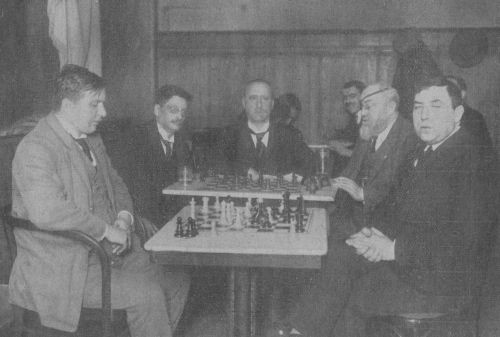
Chess Losers: "Richard The Fifth"
About a year ago, Netflix released a mini-documentary series called Losers. The documentary series followed the lives of the athletes who, for whatever reason, ended up on the wrong side of a result:
A trailer for Losers - incidentally the football team Torquay United are just around the corner from where my parents live! Having watched every episode, I can say that it is definitely worth a watch if you like documentaries like me
We as a society celebrate greatness (like our world chess champions). However, do we do enough to celebrate the chess players who ended up on the other side of a result?: The losers... In any case I wanted to focus on one player in this blog: Richard Teichmann (or Richard the fifth due to his tournament results). You may recognise this name, some may even be able to credit him with the quote: "Chess is 99% Tactics." Despite his immortal chess maxim, he is often the player who has ended up on the receiving end of a strong tactical combination, and sadly an example for all chess players of how not to play the game:
- Against Emmanuel Lasker +0-4=0
- Against Jose Raul Capablanca +0-2=1
- Against Alexander Alekhine +3-5=5
Perhaps Richard should only be remembered as a chess punching bag for the champions, essentially a "loser". In actual fact there is more to Teichmann than meets the eye (no pun intended).
A history of Richard Teichmann
Richard Teichmann was born in Lehnitzsch Sachsen-Altenburg, Germany, in 1868. At the age of 22, he became a student of modern languages, becoming fluent in several of them. At 24 he would move over to England to become a language teacher.

A young Teichmann
At the age of 26, he would achieve his first tournament success, placing third in a difficult DSB Kongress in Leipzig:


A photo of 9th DSB Kongress Certainly an impressive field of players which included world greats like Tarrasch, Blackburne and Schlecter
Here is one of his wins in this tournament. Teichmann shows off his steely determination, parrying white's assault and finding the right counter-play:
Teichmann would go on to be a prolific tournament player and be a formidable opponent. His cautious slow play, a contemporary chess magazine argued, stood in contrast to his opposition. Indeed, in a 6-game match against Mieses, "his healthy, sober, consistently solid game" countered Mieses' "combinational style" of play. (Deutsche Schachzeitung, No. 3, March 1895, pp. 92-93)
A German online article on Teichmann summed up his play perfectly:
"His personality is calm, quiet, and thoughtful, so is his play, which persistently and surely follows a thought out plan, and he seldom endangers himself though precipitancy." (https://www.schachbund.de/news/genug-des-stumpfsinns-remis-richard-der-fuenfte-kam-aus-altenburg.html)
Sadly, despite his early successes, in a London tournament in 1899 Teichmann would have to withdraw from the competition due to an eye infection. Unfortunately this eye infection would result in the loss of his right eye, leading to his trademark eye-patch in future photos:

Viktor Tietz, Richard Teichmann und Carl Schlechter in Karlsbad 1911
Unfortunately the loss of his right eye was thought to have seriously impeded his play. In one match against Paul Saladin Leonhardt, it was believed that his other working eye was proving trouble, giving the game the name: The "Bad Eye Game" -


- Monte Carlo 1903
- Vienna Gambit thematic tournament 1903
- Hamburg Jubilee 1905
- Ostende 1905
- Vienna 1907
- Vienna 1908
- Prague 1908
- Hamburg 1910
World Champion Emanuel Lasker, the man he would steam-roll him in four of their meetings, remembered him in a much better light in Teichmann's 1925 obituary:
